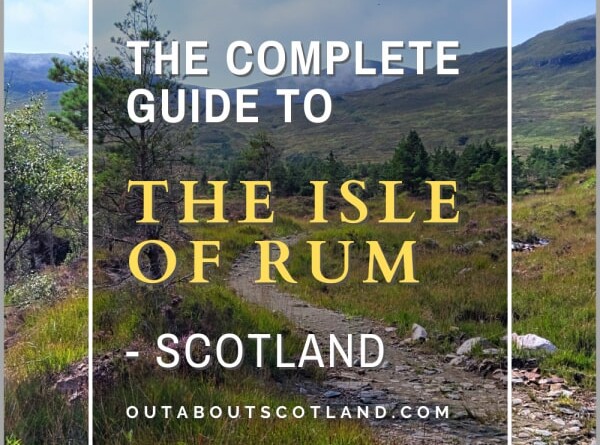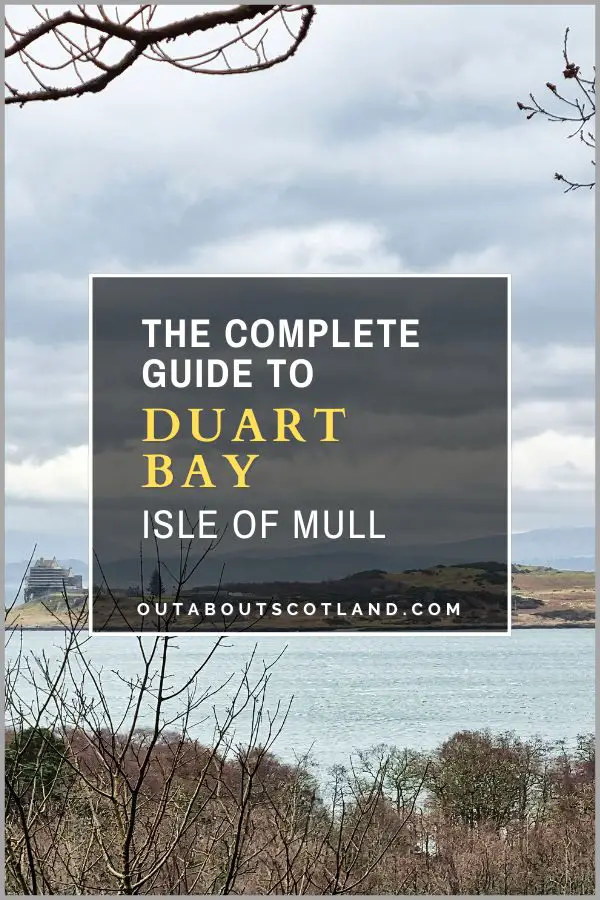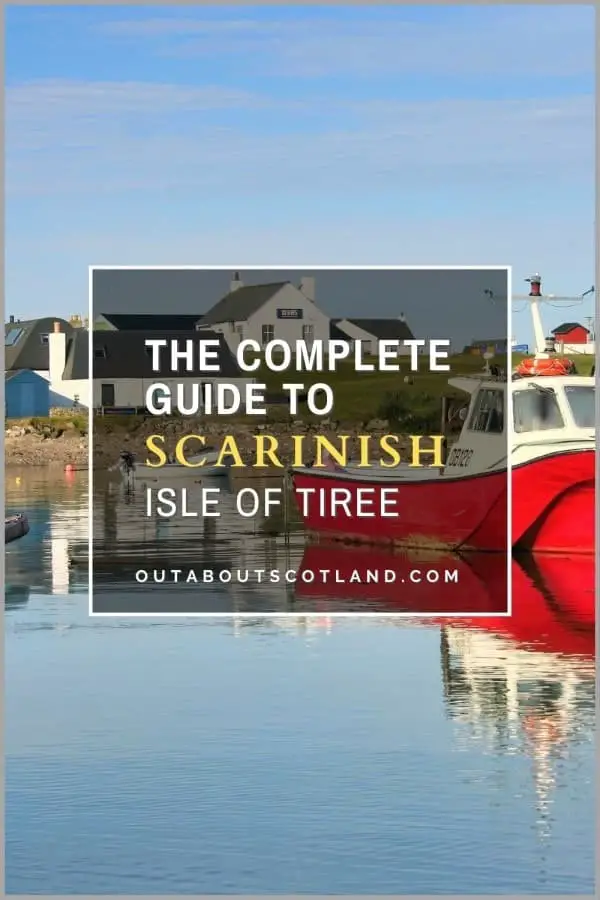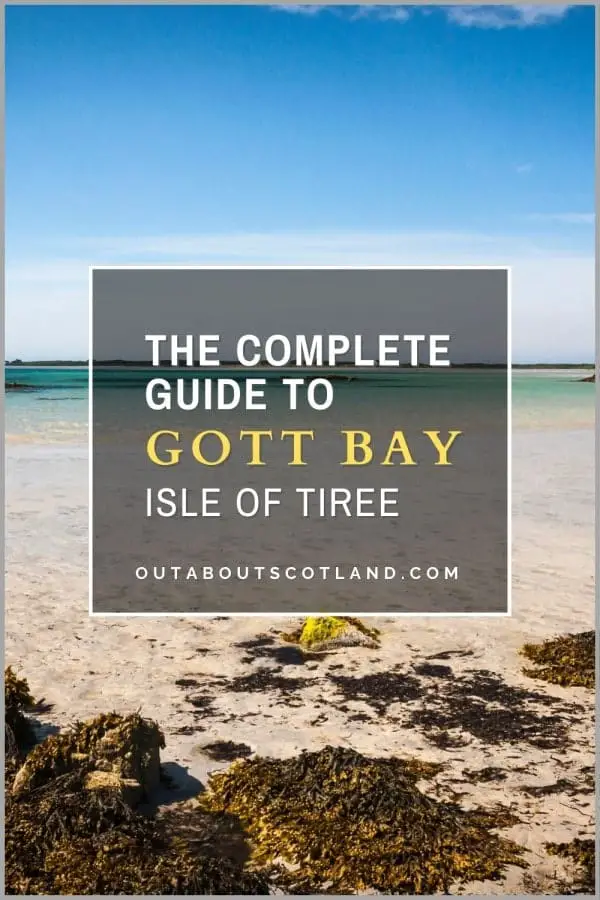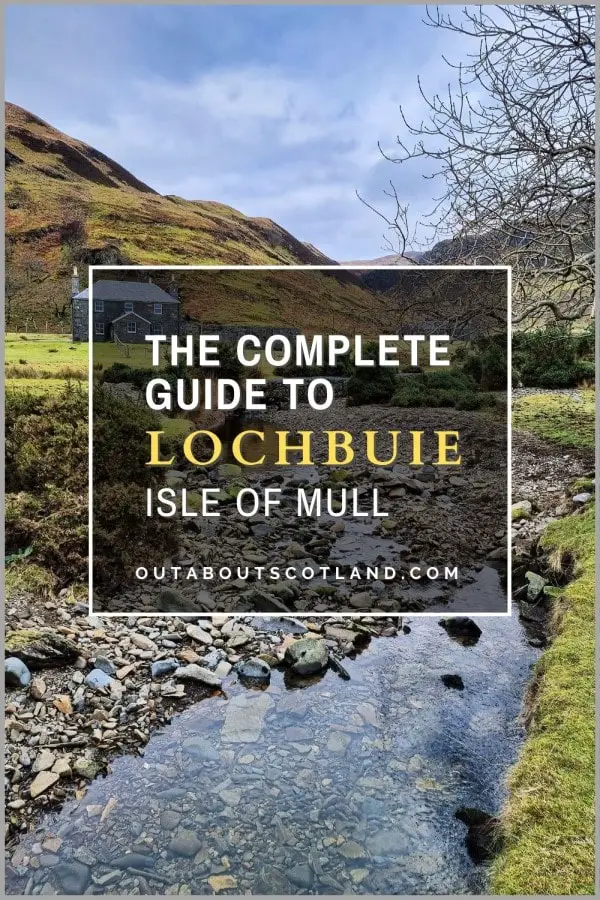The Small Isles on the west coast of Scotland include Canna, Muck, Eigg, and Rum. With an area of 182 square miles, Rum is the largest island in the archipelago, but there are only 40 people living there. Getting to Rum involves a short ferry ride from the neighbouring Isle of Skye, after which visitors are free to explore mile after mile of heather-covered moorland and dramatic mountains, all surrounded by a windswept and rugged coastline.
Discover the breathtakingly beautiful Isle of Rum in the Inner Hebrides with this complete guide which includes an overview of the island and lots of useful visitor information.
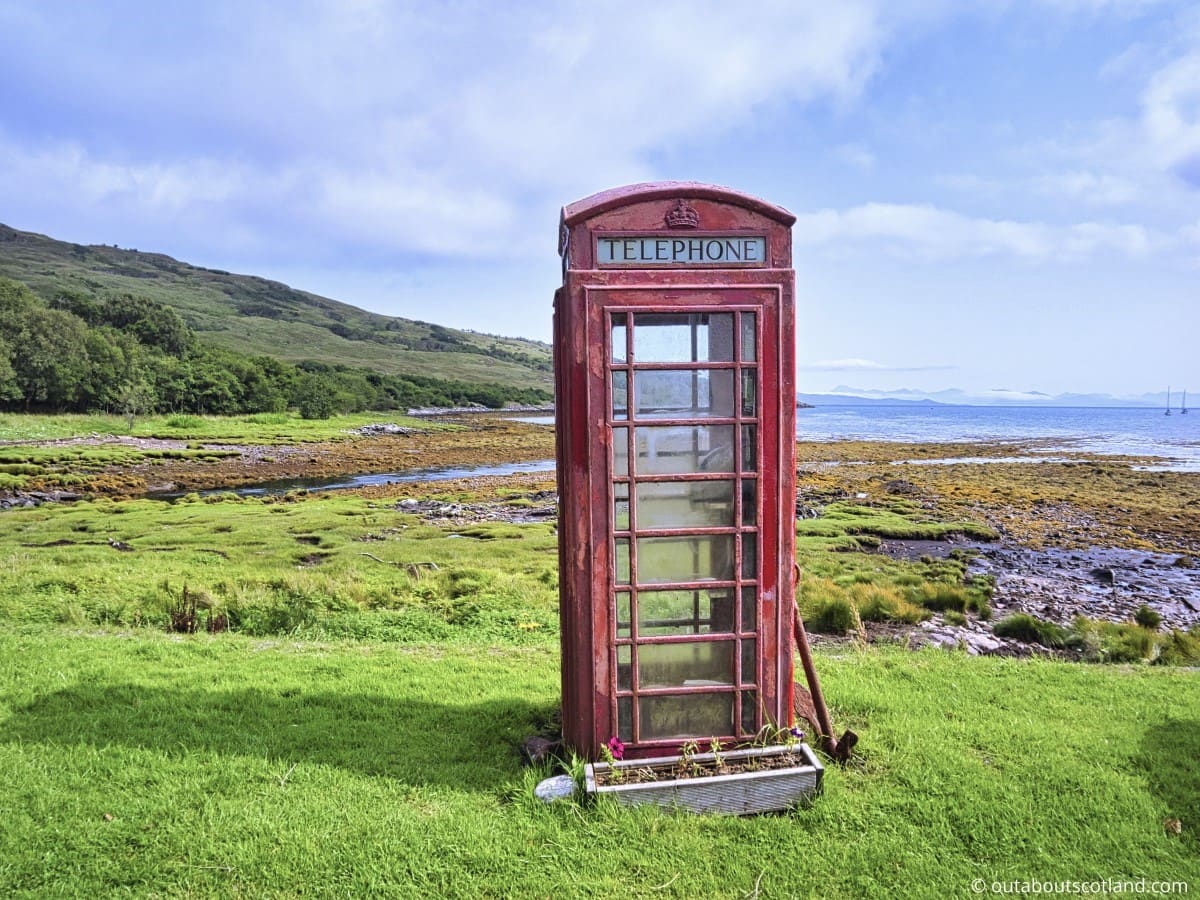
Overview
There’s a lot to like about the Isle of Rum. From the pretty surroundings of Loch Scresort at the ferry terminal to the dramatic mountain peaks of the Cuillin Ridge to the south, this is an island that’s begging to be explored.
Rum is located west of the Scottish mainland, 7 miles south of the Isle of Skye, and 15 miles west of the fishing port of Mallaig. The island is part of Scotland’s Small Isles, an archipelago consisting of Canna, Eigg, Muck, and Rum, with Rum being the largest by some margin, but even so, it’s only 40 square miles in total area.
The entire island is managed by the public body Nature Scot as a National Nature Reserve, and due to the fact it’s so remote and has just 40 people living on it, Rum is one of the few places in Scotland that remains almost entirely unchanged by tourism. Visitors will find an incredibly varied mix of habitats when they explore Rum, all of which are a haven for animals rarely seen elsewhere in Scotland.
There are thriving colonies of golden eagles and sea eagles, one of the world’s largest breeding colonies of Manx shearwater, and a coastline that’s a favourite breeding ground for otters and seals. Rum is also home to over 900 red deer, which have been part of the world’s longest-running study of a wild animal population since the early 1950s.
Many of the island’s permanent residents are still involved in the study, whether they are full-time volunteers or actively employed by Nature Scot.
The majority of people on Rum live around the tiny village of Kinloch which is also the location of the ferry terminal and the first place visitors step foot onto. It’s a very pretty part of the island, with woodland bordering the crescent bay of Loch Scresort and multiple paths leading south into the jaw-dropping scenery of the Rum Cullin mountains. There aren’t many facilities at Kinloch, but, to be honest, that’s all part of its charm.
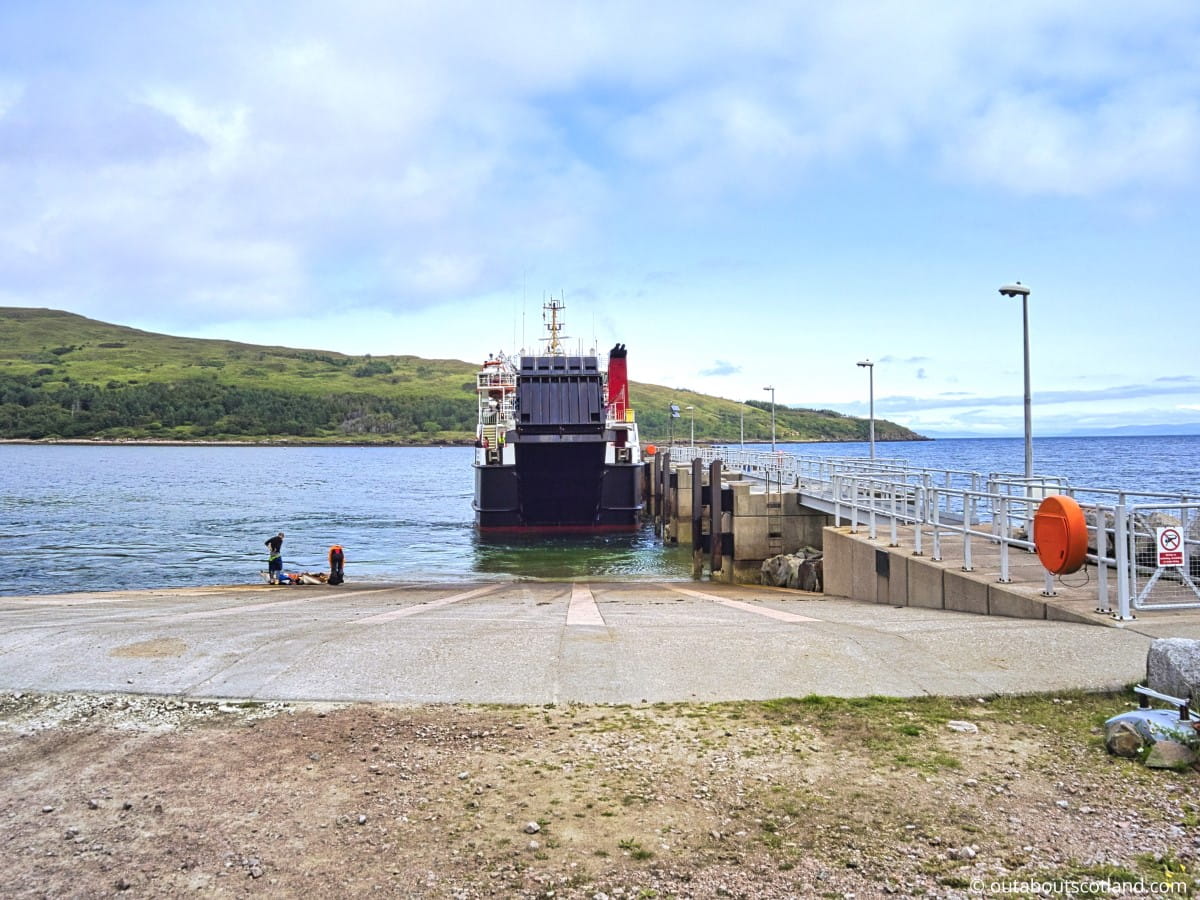
You’ll find a small community hall at the far end which has a gift and food shop on one side as well as a café, while the opposite side of Kinloch features the newly-built Rum Bunkhouse and a campsite (both managed by the Isle of Rum Community Trust), plus public toilets and a wee visitor centre.
The only other notable feature is Kinloch Castle – a grand 19th-century country house that was built for the wealthy Sir George Bullough and is occasionally open for guided tours. The interior of the ‘castle’ is almost entirely unchanged from its heyday in the 1900s and features one of the earliest private electrical systems in Scotland, as well as the world’s only playable motorised music organ.
Sir George Bullough later bought the organ from Queen Victoria and installed additional extravagances like a palm house with hummingbirds and alligators, a sizable ballroom, a bowling alley, and a private golf course. But as impressive as Kinloch Castle is, the best reason to visit Rum is to simply set off and explore it.
From Kinloch, there are two gravel roads and one footpath that wind their way across the island, with the roads providing easy access to the west and north coasts, and the footpath offering a slightly more taxing gateway into the Cuillin mountains.
Trying to fit all of these sights into one visit is pretty much impossible as the majority of visitors will find themselves limited to the timetable set out by Calmac ferries (see their Rum page for details), with around six hours on the island and an 80-minute sail each way from Mallaig. Not a huge amount of time for sightseeing, but certainly enough to get a good feel for the island. I’ll cover my experience of visiting Rum as a day-tripper in the next section.
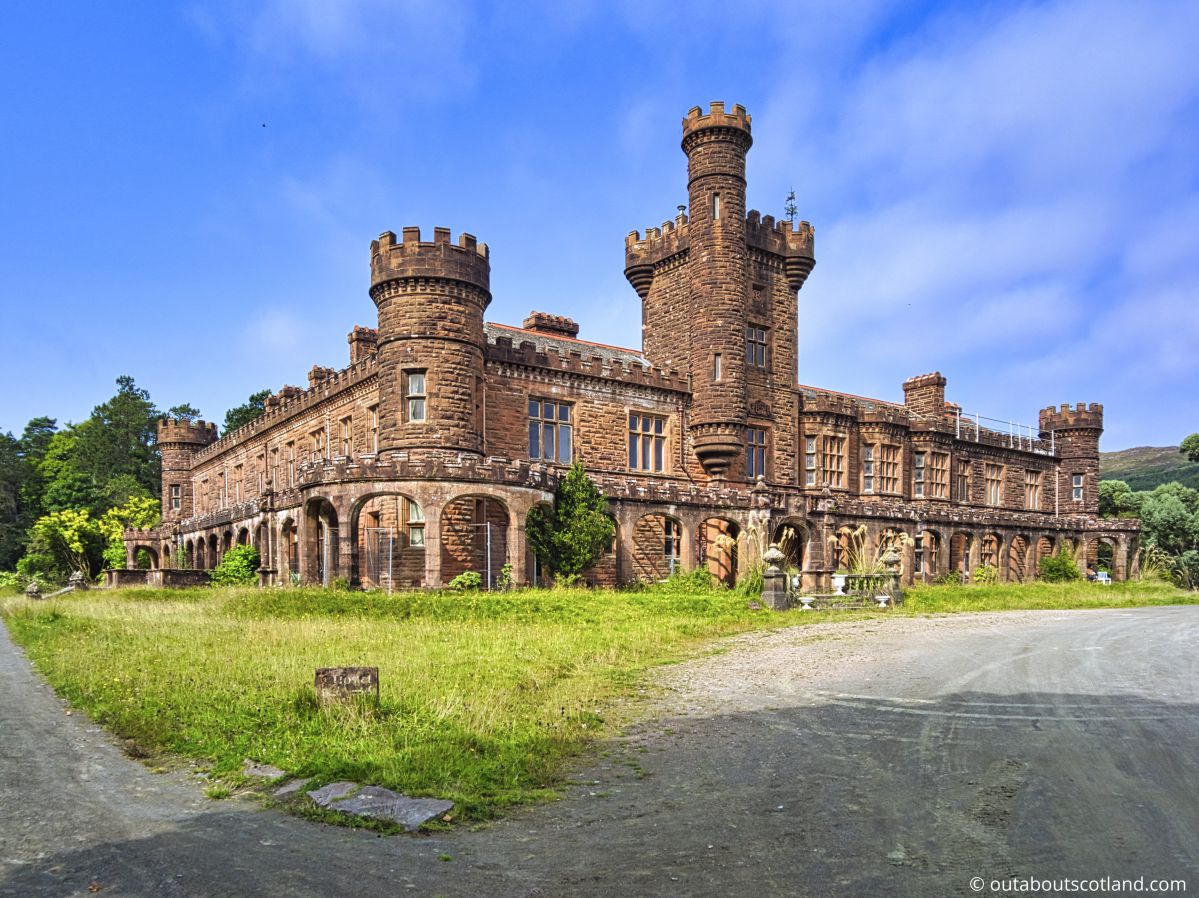
The Highlights
1: The island of Rum easily rivals its famous neighbour Skye for scenery, yet it’s much quieter and has a real off-the-grid atmosphere. If you really want to get away from crowds of tourists, a visit to Rum should be at the top of your list of places to go.
2: Cycling on Rum (at least on a mountain bike) is superb, with long tracks that are level with few inclines. The single-track gravel road that winds its way from Kinloch to Kilmory is particularly good as it passes through a favourite grazing area for herds of red deer, where sea eagles are frequently seen soaring overhead. Don’t forget your binoculars (link to recommended pairs)!
3: The southern half of Rum is home to the monumental Rum Cuillin Ridge – a mountainous series of peaks that culminates with the Askival Corbett at 2,660 feet. Traversing these ridges is a challenge for even advanced hikers but it has to be one of the most enjoyable ways to experience the island. While the entire range can be broken down into short sections, the majority of people attempt the classic Cuillin Ridge Walk (link to the Walk Highlands guide), which crosses 5 peaks over 13 miles.
Visiting Tips
1: Although Rum is best explored on a mountain bike, day-trippers on foot will find a number of short walks around the ferry jetty and the village of Kinloch, as well as the beautiful Kinloch Castle. Longer walks through Rum’s beautiful surroundings are possible thanks to wild camping being permitted on the island as well as access to two bothies in Guirdhil and Dibidil.
Be aware that these bothies are very basic, so you will need to bring your own cooking equipment. To learn more about Scotland’s bothies, I recommend reading The Scottish Bothy Bible (Amazon link).
2: Rum can experience fierce clouds of biting midges, just like pretty much everywhere else on the west coast of Scotland. To combat the wee menaces, read my Guide to Avoiding Midges in Scotland and pack Smidge lotion (Amazon link) in your backpack. I also suggest packing for inclement weather even in summer, as the wide-open moorland of the island’s interior offers little protection.
3: Facilities on Rum are reasonable for an island that has around 40 permanent residents, but don’t go expecting Skye levels of luxury.
For accommodation, the Rum Bunkhouse in Kinloch is probably the best option as it features showers and a kitchen, but there’s a campsite opposite for those that prefer pitching a tent. Prepared food (fish and chips, sandwiches, etc.) can be purchased from Kim’s Kitchen in the Kinloch community hall, and canned food can be purchased from the Wee General Store next door.
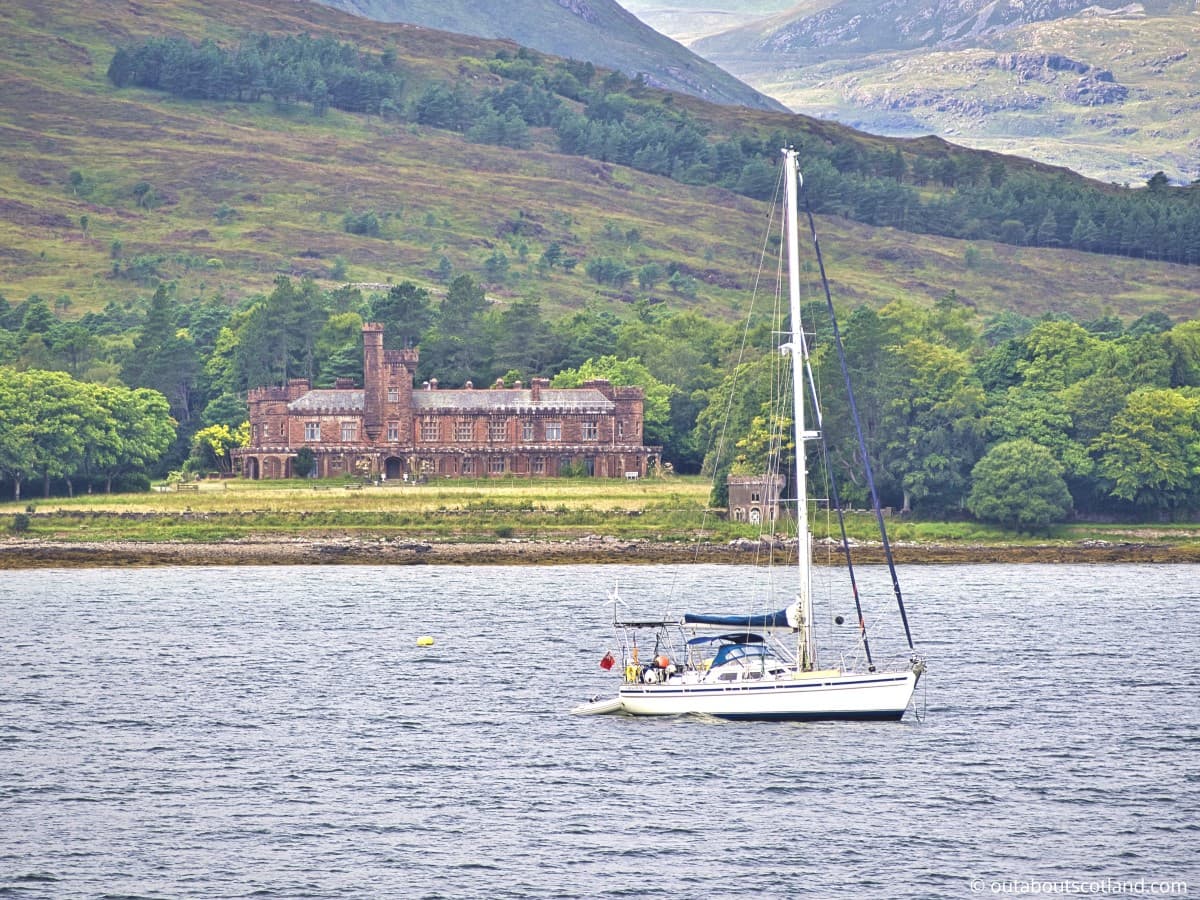
Tourist Information
While planning my short visit to Rum I spent a good amount of time poring over my trusty OS Map (which proved invaluable during my visit – get your map here) and eventually decided on an itinerary I could comfortably fit into six hours.
This comprised of a short wander around Kinloch followed by a hill walk up Hallival and a cycle to Kilmory Bay, with extra time allocated for picnic stops and plenty of photos.
The sail from Mallaig is brief enough to spend the entire time outside on the observation deck, giving you a good view of the Isle of Eigg as it passes by and then the rocky shoreline of Rum. Once the ferry had dropped its passengers off, I set off along the narrow track leading to Kinloch, briefly stopping to read a couple of information signs before popping my head into the visitor centre and community hall that serve tourists as well as the people permanently living on the Isle of Rum.
The initial views of Rum are stunning, with the sheltered waters of Loch Scresort twinkling away against a backdrop of woodland and the imposing red sandstone of Kinloch Castle framing the scene at the far end. The walk from the ferry jetty to Kinloch Castle only takes around ten minutes, so I was hoping to have lots of time to explore the interior, but sadly it was closed, though from speaking to a local, it’s hoped to open for tours in the near future.
Photo opportunity over, it was time to push on and grab a few snacks from the community shop which was surprisingly well-stocked for such a tiny resident population. Speaking to a fellow traveller who’d been on Rum before, the community hall’s on-site café is excellent, and the locally caught fish is worth the visit alone. If you visit Rum, definitely keep an eye open for Kim’s Kitchen.
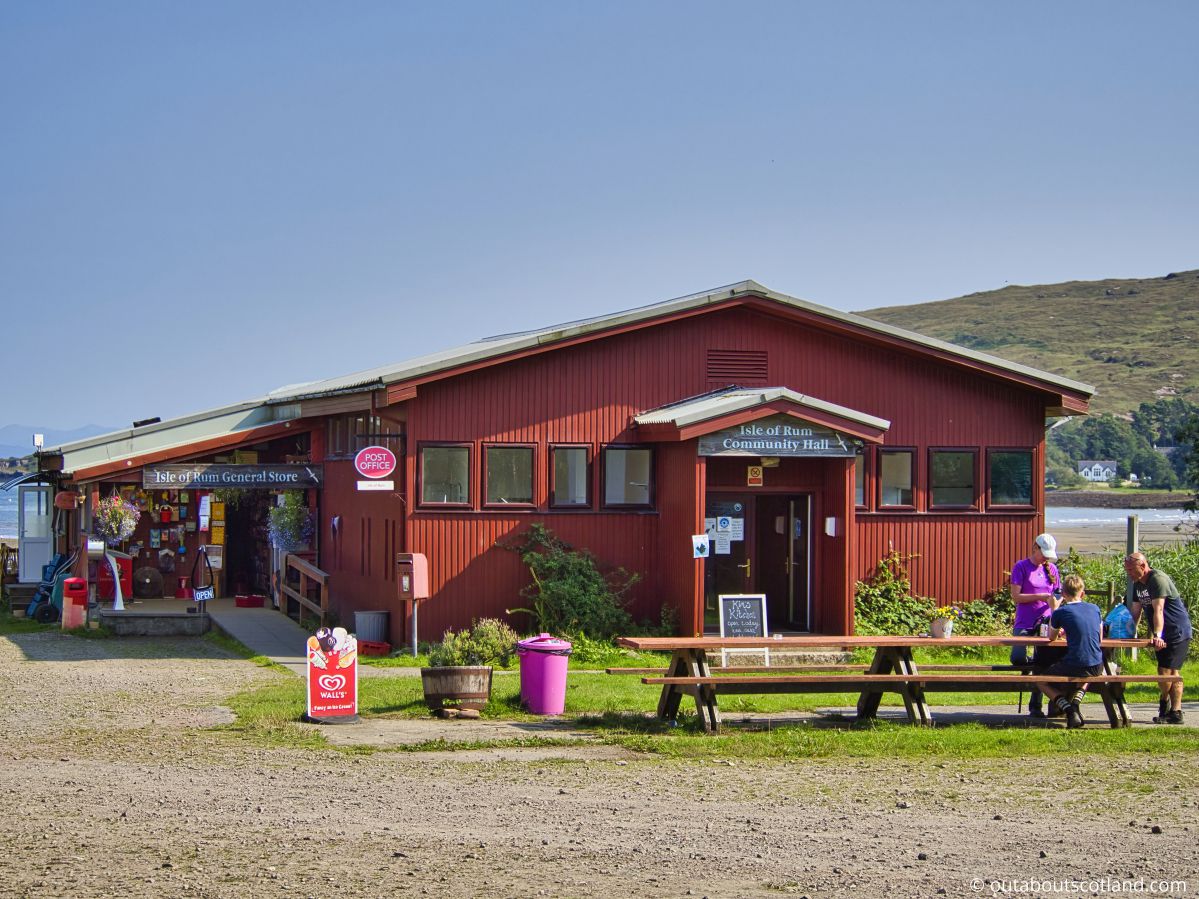
After chaining my bike against a fence post (I admit I didn’t need to chain it on this island, but I live in Edinburgh and old habits die hard), I pressed ahead on foot to climb partway up the 2,300-foot summit of Hallival. The footpath starts at a track immediately before Kinloch Castle and slowly rises up a gentle incline past waterfalls and meandering burns till it reaches a plateau where Skye is clearly visible in the distance.
It’s a short walk to the end of the footpath which stops at a man-made dam across the Allt Slugan a’ Choilich burn, but it’s worth the effort involved as the views along the entire length are incredible. In fact, I’ll go as far as saying this is one of the most scenic parts of the island, and seeing as it only takes 1-2 hours for a return walk, you almost have to include it in a visit to Rum.
From the dam, it’s possible to head further south to Rum Cuillin’s on a well-worn mountain trail that crosses five of Rum’s six mountain peaks. However, at around 12 hours, it’s a hike that will be impossible for day-trippers.
Instead, after walking back down the Hallival path I suggest taking the road that heads out of Kinloch which eventually separates in the centre of the island (there’s a signpost where the road splits). By all accounts, both roads offer similar views and both finish on the coast. The west-facing road heads across the island to Harris, where the Bullough family mausoleum has stood watch over the clifftops for well over a hundred years.
The northern road, meanwhile, passes through rough grass and moorland to Kilmory Bay which has a large golden sand beach that’s entirely secluded and is a favourite viewing site for red deer thanks to the freshwater Kilmory River that flows into it. The road to Kilmory is around 12 miles return, while the road to Harris is around 15 miles return, which potentially puts either destination out of reach of walkers but is certainly possible for those on two wheels.
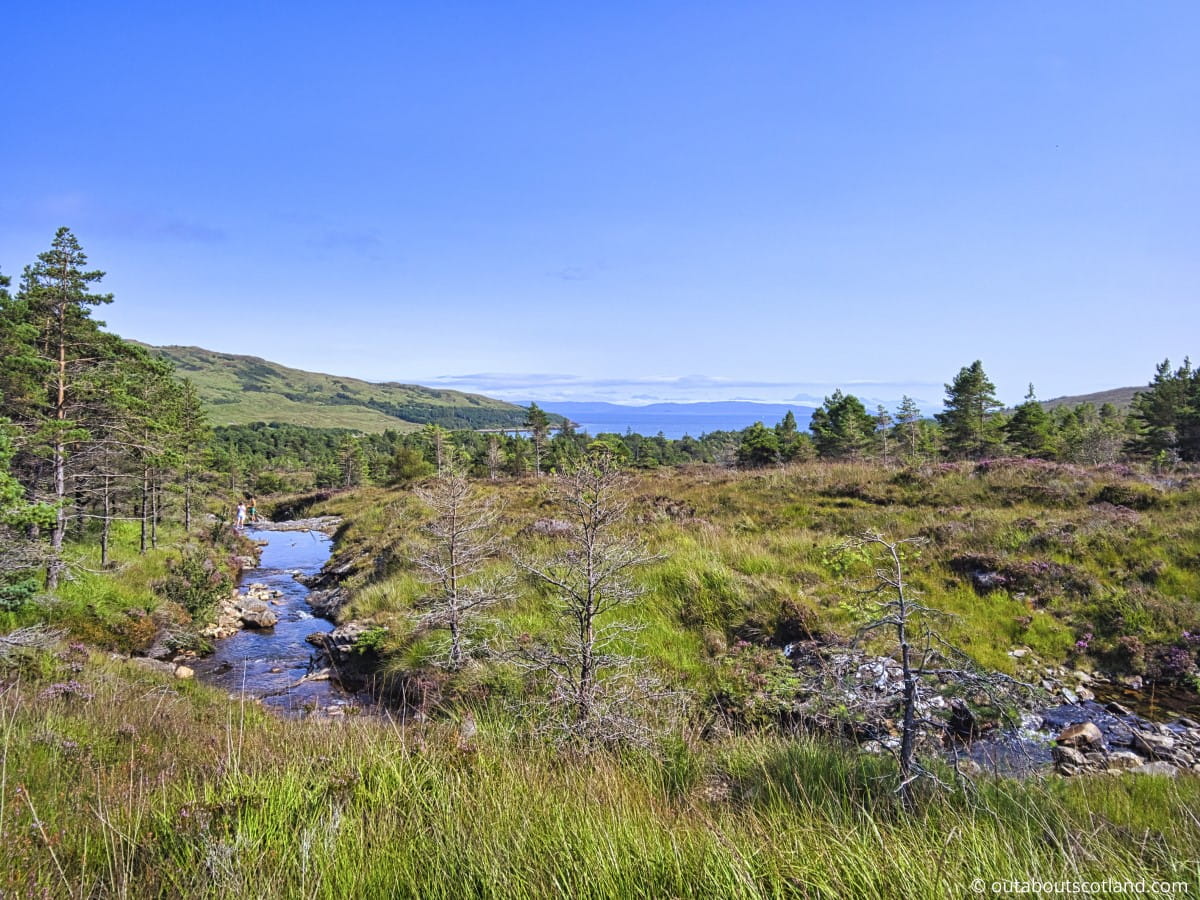
As I was itching to see the bay I chose the route to Kilmory which ended up being a slow cycle on a single-track gravel road that has its fair share of potholes. On the upside, the majority of the route is level, although towards Kilmory there are a few long inclines that will almost certainly get the heart pumping.
As far as views go, the centre of Rum is rather barren, with mile after mile of wild grass and moorland covering flat plains on either side of the road, all bordered by steep granite slopes. It’s very, very scenic, though, and it has an otherworldly beauty that guarantees it will stay in your memory for a long time.
The landscape breaks away into patches of woodland near Kilmory and it’s in this area where I saw the majority of the island’s famed red deer, perhaps because of the safety the nearby trees offered them. The deer were rather skittish, and I was glad I had my trusty binoculars in my backpack (see my recommended binoculars if you don’t have a pair yet) as well as a telephoto lens on my camera.
But even so, they didn’t hang about and I was only able to watch them for a few minutes before they all disappeared over the hills. As luck would have it, just as the deer wandered off, a couple of golden eagles circled overhead, which appeared to be on the lookout for their next meal.
I could have sat and watched those majestic birds all day but the midges were out in force so I retreated back to the safety of my saddle, hopeful that even my weedy legs could outrun the wee biting menaces (top-tip: stock up on Smidge – Amazon link here – if you ever visit Rum).
The track ended at Kilmory and I was pleased to discover the beach is every bit as beautiful as I’d been told it was. There are bigger beaches in Scotland to be sure, but not many that are as secluded and fewer still that have as magnificent views as this one across the sea to the Cuillins on Skye.
As the beach was blissfully free of midges, it made a good place to eat before pedalling back along the same route to Kinloch, with the entire return cycle route between Kinloch and Kilmory taking around four hours at a very relaxed pace.
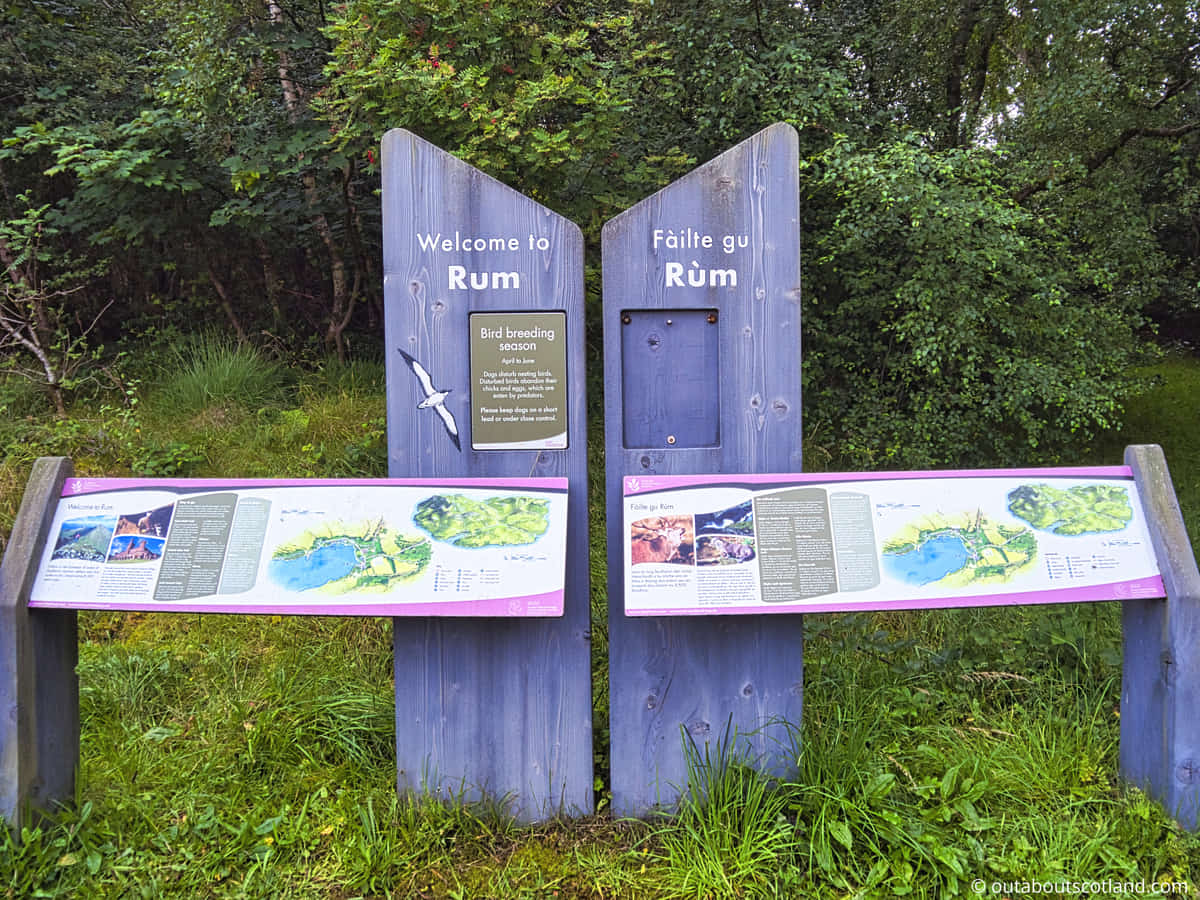
Things to Do
Wildlife Watching: Rum is home to a diverse array of wildlife. From majestic red deer to playful otters and a multitude of bird species, nature lovers will be in heaven on this island. Guided wildlife tours (April to October) offer an opportunity to learn more about these animals as well as catch sight of rarities like white-tailed and golden eagles.
Hiking: The island boasts spectacular terrain with rugged hills and a beautiful coastline. There are several marked trails, but the challenge of climbing Rum’s highest peak, Askival, is a must-do for experienced hikers.
Kinloch Castle: This Edwardian mansion is an architectural marvel that’s definitely worth investigating. Though currently closed to the public, visitors are permitted to walk around the exterior to admire the architecture of one of Scotland’s finest buildings of its time.
Rum National Nature Reserve: The entire reserve is a paradise for nature lovers. It covers most of the island and is home to a vast range of wildlife from rare plants to otters, as well as red deer which are the focus of the world’s longest-running scientific study.
Cycling: Although there’s no tarmacked road on Rum, the firm tracks that run through the centre of the island are ideal for cycling. Along the way, you’ll be able to encounter terrains varying between moorlands and mountains which make for an unforgettable cycling experience.
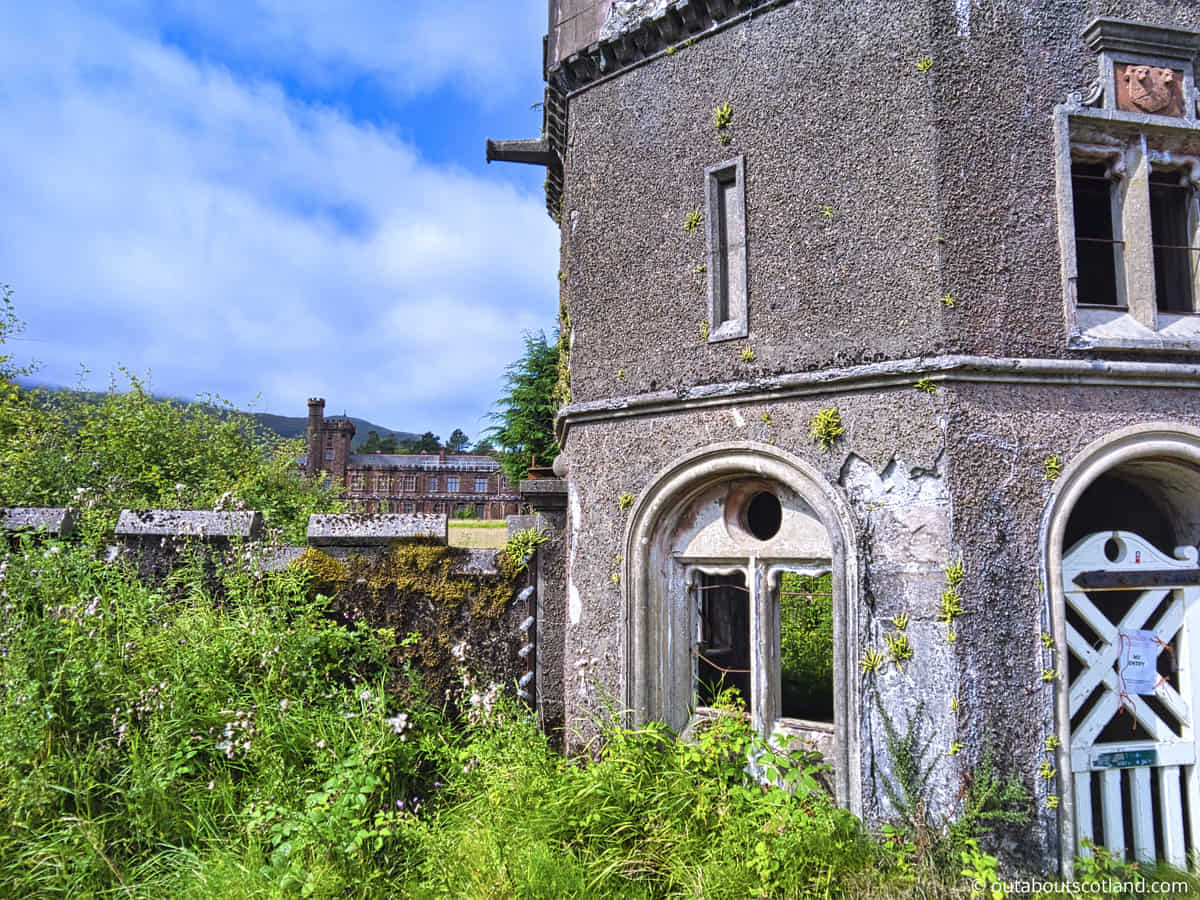
Things to Do Nearby
Explore Kinloch and Kinloch Castle. Even though most of the residents of the small community at Kinloch are Nature Scot employees and their families, it still has a store, a cozy bunkhouse, and a café. Around one mile from the ferry jetty, visitors can also view Kinloch Castle, which is currently closed to the public but is hoped to be restored and reopened in the near future.
Climb mountains. Rum is an underrated gem when it comes to mountain hikes thanks to the majestic Rum Cuillin’s which dominate the southern half of the island. Getting to the mountains involves a lengthy hike across boggy moorland before reaching the first of the six peaks, which all offer incredible views, but only after traversing technical climbs with plenty of scrambling over loose rocks.
Wildlife watching. Nature Scot, who looks after the nature reserve that is home to a wide variety of animals, owns and manages rum. Not only is the island home to almost a quarter of the world’s population of Manx shearwater, but it’s also a haven for red deer and white-tailed sea eagles. To learn more, visit the Nature Scot website.
Cross-country cycle ride. Although the roads that cut through the island are little more than gravel-strewn tracks, the landscapes they pass through make pedalling along the bumpy terrain a genuine pleasure. There are two superb routes that are a must-do for anyone on Rum with a bicycle, which are the trail from Kinloch to the Harris Mausoleum on the west of the island and Kinloch to Kilmory on the north. Kilmory is a ten-mile return journey, while Harris is a sixteen-mile return.
Fishing. There are six lochs on Rum (Loch Papadil, Loch Coire nan Gruund, Loch MacIvor, Loch Fiachanis, Loch a’Ghillie Reamhra, and Loch Longwhich) which are open for fishing between April and October. Permits are required for fishing on the lochs, but they are provided free of charge from the Nature Scot office and the community shop in Kinloch. There is also the option to fish around the coastline, for which no permit is required.
Frequently Asked Questions
Does anyone live on the Isle of Rum?
On the Isle of Rum, there are about 40 permanent residents, the majority of whom work for Nature Scot, a government organization conducting research on the red deer population there. All inhabitants of Rum live in the settlement of Kinloch on the island’s eastern side.
During the 1800s, the population of Rum exceeded 450 people, but they were forced to leave during the Highland Clearances. 300 tenant farmers left the island permanently in 1826, and the remainder left the following year, in 1827.
Is there a pub on the Isle of Rum?
There is no pub on the Isle of Rum. The island’s only settlement at Kinloch has a café, a shop, and a community hall.
Can you drive on the Isle of Rum?
Visitors cannot drive their cars on Rum. The Isle of Rum is almost entirely free of cars as the only people allowed to take vehicles onto the island are the permanent residents, most of whom use 4WD vehicles as a means to track the island’s population of red deer.
What visitor facilities are there on the Isle of Rum?
The Isle of Rum has very limited visitor facilities. The village of Kinloch has a small community shop that sells gifts and canned food. There is also a café on-site. Kinloch Village has accommodation including the Rum Bunkhouse, glamping pods, and a B&B. The village has public toilets and recycling points.
Visit the official Rum website services page for updated information on available facilities.
Is the Isle of Rum worth visiting?
The Isle of Rum is definitely worth visiting. It’s home to the Kinloch Castle, a historic castle built in the late 19th century, and it’s a wonderful location for a variety of outdoor activities such as hiking, cycling, and birdwatching.
Many visitors to the Isle of Rum also enjoy exploring the island’s beaches and taking boat trips to see the surrounding islands. So if you enjoy nature, outdoor activities, and history, the Isle of Rum will be a great destination for you.

